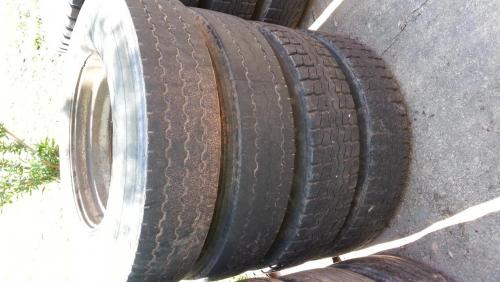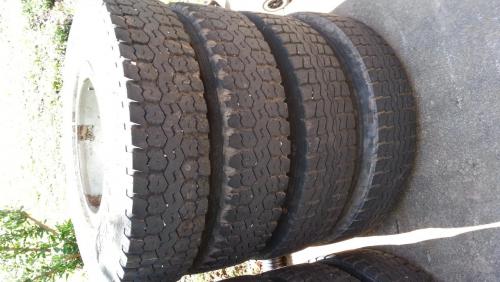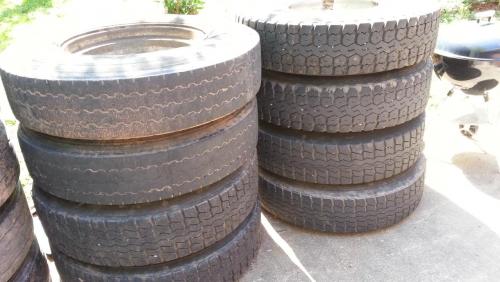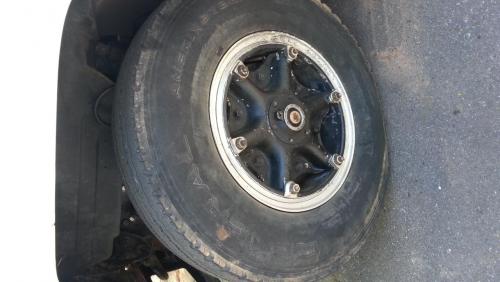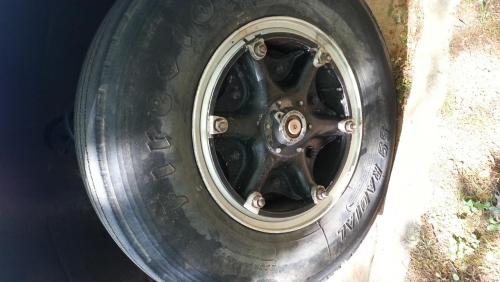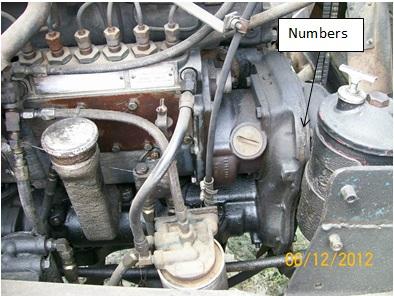-
Posts
2,617 -
Joined
-
Last visited
-
Days Won
37
Content Type
Profiles
Forums
Gallery
Events
Blogs
BMT Wiki
Collections
Store
Everything posted by doubleclutchinweasel
-
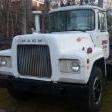
U series question
doubleclutchinweasel replied to Whiskymack's topic in Mack Scale Model and Diecast Corner
Looks just like the power steering reservoir on my R-model. The next argument will be over what type of oil to put in it! By the way, that also adds ballast to the RH side! -

weird fuel problem solved
doubleclutchinweasel replied to doubleclutchinweasel's topic in Engine and Transmission
Me too. 'Course...I didn't have all that far to go... -
You tell 'em, 'Dog!
-
Some good responses on this. But, some of them may not address your question! Clearly, there are two ways to shift; clutchless and double-clutch. Both work fine...IF PROPERLY EXECUTED. You CAN upshift with a "single clutch", as long as you wait for the input shaft to slow down to "match up" the RPM and let it slide in without too much mismatch. But, you CAN NOT downshift without either double clutching or "floating" the shift, because you simply HAVE TO raise the input shaft RPM to the point where the the shift will engage. Like most of these responses, I typically do not use the clutch to shift when things are nice and pleasant with the world. But, on occasions where I need to get out-&-in quickly, I'll use the clutch to get on with it. You mentioned the partial depression of the clutch in the original post. Yes, I have been known to do that too! The main point when shifting, either with or without the clutch, is to UNLOAD the transmission to allow it to come out of gear easily...and not chip corners off the dogs! Then do the same thing going into the next one. Sometimes, that little partial de-clutch is enough to do that. Sometimes, a particular tranny will shift BETTER with a partial de-clutch than with the pedal all the way to the floor. Keeps things spinning, I guess. Used to drive a Mack 18-speed Quadruplex which always shifted easier without the clutch than with...especially on those split-shifted downshifts! Kept you from getting hung-up between gears as much. Now, that's fun...trying to match up both ends of the box to get SOMETHING back in gear...while going uphill...loaded...and losing speed...before the silly thing came to a complete stop. I'm sure there are a few other old-timers out there who have experienced that particular little slice of heaven!!!
-

weird fuel problem solved
doubleclutchinweasel replied to doubleclutchinweasel's topic in Engine and Transmission
I have a stick! -
Fuel level kept falling in lh tank & rising in rh tank. Filled up the rh fuel tank. Fuel would not transfer to lh tank. Vent tubes were plugged. Cleaned them out and now the fuel levels equalized. Simple fix to a strange one.
-
Have tires. Need different ones. Mix of 10.00-20 & 11-22.5. 6 are caps. 1 has loose cap. On mix of rims. Pictures show 8 drive tires & 2 steer tires. Rims are 20 x 7.5 & 20 x 8 & 22.5 x 7.5 & 22.5 x 8.25. All Daytons. Like I said...a mix. 5 are 20" tube-type, 5 are 22.5" tubeless. All I want are 2 super-nice 11 R 22.5 steer tires...or enough cash to buy 2! Prefer on 22.5 x 8.25 Daytons. Can give more info & pics as needed. Steer tires are still on truck.
-

King pins-what do I need to know
doubleclutchinweasel replied to hatcity's topic in Driveline and Suspension
Read this thread. I asked some of the same questions, and got some of the same answers. See if any of this helps. http://www.bigmacktrucks.com/index.php?/topic/27991-going-into-the-steering-knuckleskingpinsbushings/ -
I'm a member of the ATHS, but rarely look at their forums. I met one or two pretty cool folks at some of the shows, too. But, I'm not sure I will even renew my membership. I get more advice and help off BMT that I can get from the ATHS members. Maybe they don't like me! Will be interested in checking out that new site, though.
-
I hate to even comment about CDL stuff, because it seems to always ignite a powder keg, but some folks here are discussing CDL requirements. So, for what it's worth, I'll throw a little info out there. Sorry to all the other folks who were talking about something else altogether! But, maybe it will be useful to somebody anyway. There are federal guidelines on commercial vehicles & licenses. There are also state guidelines on both commercial and non-commercial licenses. The state guidelines typically parallel the federal guidelines, but can be a little different from state to state. Here in NC, there are both commercial and non-commercial licenses in class A, B, and C. Yep, 6 different licenses. And, there are endorsements for various things. There are even restrictions against certain things. The class A, B, and C are directly tied to the weight and configuration of the vehicle, as several folks have mentioned above. A class A vehicle is a combination vehicle of 26,001# or more GVWR (total of truck and trailer GVWRs), provided that 10,001# or more is on the trailer. The actual NC general statute also states that a combination vehicle of less than 26,001# combined GVWR is a class A vehicle, IF the trailer is 10,001# or more GVWR. But, more on that later. A class B is a single vehicle of 26,001# or more GVWR. By definition, this vehicle can pull a trailer of up to 10,000#. If the trailer goes to 10,001# or more, this combination becomes a class A. A class C is a vehicle which is not a class A or B. Single vehicles under 26,001# GVWR fall into this category. There are also certain provisions which have been changed, such as the addition of "any combination of vehicles up to 26,000# GVWR, driven by a person of at least 18 years of age." This was added in recent years, and means that certain combinations of vehicles, which would have fallen under the second type of class A vehicles, can actually be considered class C. An example of this would be a 15,000# GVWR truck and an 11,000# GVWR trailer. This would have met that second provision (over 10,000# trailer). But, with the addition of the newest class C description, actually can be driven by a class C license holder of 18 years or more age, because the combined GVWR did not reach 26,001#. Oh, and if you read between the lines, there ARE combinations of over 26,001# GVWR which could fall into class C. If a 25,000# class C truck is pulling a 3,000# trailer, this 28,000# combination DOES NOT meet either the class A or B requirements. As such, it fits the definition of a class C. That one will generally start a feud! The commercial and non-commercial are just that...if the vehicle is engaged in the furtherance of a commercial endeavor, you need a commercial license of the appropriate class for the vehicle. If the vehicle is not used for any commercial purpose, then you need a non-commercial license of the correct class for the vehicle. The commercial use is what determine this. Obviously, if you are being paid to haul something, that is commercial. Also, if you are hauling YOUR stuff, but are being paid to use that stuff when you get it there, that is also commercial. An example would be hauling your dozer to perform paid dozer work for someone. Since the vehicle is involved in the furtherance of the commercial endeavor (paid dozer work), then the vehicle itself is commercial. This also parallels the "For Hire" and "Private" motor carrier definitions. They (NC) do have one exception, however. If a commercial vehicle is a class C, and is not carrying a certain number of passengers or a certain quantity of hazardous material, then it does not require a commercial license. This is the case of a pickup truck which belongs to a construction company, for instance. Only non-commercial, class C licenses are required to operate them, even though they are engaged in the furtherance of a commercial endeavor. But, if you haul over a certain number of passengers, or haul hazardous materials in sufficient quantities to require placards, then a class C commercial license is required. This is also the source of the most confusion among discussions of commercial vs. non-commercial licenses around here. Many people think that any vehicle over 26,000# automatically requires a commercial license. Not so. According to the law, any vehicle UNDER 26,000# automatically takes a NON-COMMERCIAL license, providing it does not meet the passengers or hazardous material stipulations. Again, the class A, B, or C is a classification based on configuration and GVWR. Commercial or non-commercial is a different discussion altogether. All that being said, this is NC law. Your state can be different. If so, learn the laws in your state. I don't know them! I HAVE, however, spent many, many hours both studying the NC general statutes, and discussing the various scenarios with the folks at the NC DMV. I actually found most of them to be very helpful, once they actually understood the questions you were asking. Also, I am not a lawyer. I do not offer legal advice. I only tell what I have leaned, or how I have interpreted it. My only advice is to contact the authorities in your state, tell them what you are trying to figure out, and talk to them. Oh, and one other thing...disregard any advice from anyone who starts a sentence with "I've always heard ..." or "I always thought.." or "I was always told..." Go straight to horse's mouth (or the other end, depending on the individual!), and try to get the facts straight. Also, READ the actual general stautes for your state. They can be difficult to read, but sometimes they actually make some sense. Good luck!
-
Tom, Not sure about the laws in your state. But, in other states, you can be cited for carrying more weight than the unit is tagged for, OR for carrying more weight than the factory GVWR. Here, in NC, there IS a provision in the DMV regulations that state that, if appropriate modification have been made to the vehicle to allow it to carry more weight, that it can be tagged heavier than GVWR. It does NOT, however, go into any explanation of exactly what those types of modification would be. One can only assume that adding a tag axle, for instance, would entitle the unit to more weight. It's one of those things you don't want to learn in the court room, isn't it? Kent
-

WANT TO BUY Tie Rod (center link) Needed
doubleclutchinweasel replied to doubleclutchinweasel's topic in Parts Wanted
Okay. Sent you an email to that address. Kent- 12 replies
-
- tie rod
- tie rod end
-
(and 1 more)
Tagged with:
-

WANT TO BUY Tie Rod (center link) Needed
doubleclutchinweasel replied to doubleclutchinweasel's topic in Parts Wanted
Will do...- 12 replies
-
- tie rod
- tie rod end
-
(and 1 more)
Tagged with:
-
If you do a Google search for "Mack engine identification guide", there will be a link to a thread on this website which explains all the nomenclature. I have that .pdf file saved, if anybody can't find it. in fact, I'll attach it here. There was, apparently, a different numbering system prior to 1975, an intermediate system from '75 to '80, and another one introduced in '80. The plain "E" designation started around 1980. That would be E6 for what used to be called Thermodyne and EM6 for what used to be called Maxidyne. And, like you stated, the designation EM6-300 is definitely the easiest to decipher! Since this truck was reportedly a 1970, then there should be an "old" designation on it, like ENDT-675. They did start dropping off the END part at some point. In fact, mine is a '70 with the original engine (S/N verified off the build sheet), and it has already had the END prefix dropped. So, that started a pretty long time ago. Oh, and it DOES, indeed, look more like a 237 than anythiing else. Doesn't it? Kent Engine Model Designations.pdf
-
I may be off-base here. But, if I am, I'm sure somebody will correct me (with extreme prejudice!). Yes, there may be a data plate on the side of the pump. But, I have seen these go missing or become faded out and unreadable. In the attached image, the arrow shows where there may be a number stamped on the accessory drive case. This is the engine model number and serial number. On this one, (an ENDT-673C - a 250HP Thermodyne), they left off part of the number, and just marked it T 673 C ... and then the serial number. I guess they figured we should already know it is an engine (EN), and that it's a diesel (D)! See if you have a number there. If so, it will give you a lot of info. For instance, I think a 237 Maxidyne would be an ENDT 675. But, then again, I could be wrong... Kent
-

New Shift Knob for RoadRanger
doubleclutchinweasel replied to doubleclutchinweasel's topic in Engine and Transmission
excellent idea!- 21 replies
-
- shifter
- range valve
-
(and 1 more)
Tagged with:
-

New Shift Knob for RoadRanger
doubleclutchinweasel replied to doubleclutchinweasel's topic in Engine and Transmission
Well, I figured, since I had the original Fuller transmission, I'd stay with the Fuller control knob. I hadn't thought about it, but I suppose you are corrct, though. There is probably a Mack knob that would do the same exact thing. I wouldn't mind swapping out the medallion on the knob for a 10-speed shift pattern version. But, those medallions seem to cost almost as much as the knob! That is, IF you can even find them. I wonder if there might be a Mack medalion to fit that Eaton-Fuller knob... Oh, and I agree; those old round knobs are about as cool as you can get!- 21 replies
-
- shifter
- range valve
-
(and 1 more)
Tagged with:
-

New Shift Knob for RoadRanger
doubleclutchinweasel replied to doubleclutchinweasel's topic in Engine and Transmission
Hey, Speed. The way this valve is ported is like this. When the range select lever is "down" (LO), the "supply" port is connected to the "delivery" port, which feeds the slave valve/cylinder. When the range select valve is "up" (HI), the "supply" port is closed-off, and the "delivery" port is exhausted to the atmosphere. As long as your 2-speed valve is similarly ported, then I don't see why it wouldn't work. I mean, pressurized air and vacuum are similar systems. They both work on a pressure differential. The primary difference is the AMOUNT of pressure differential you have to work with. With pressurized air, you can get more work out of it. But, if the system is already functioning correctly on vacuum, then the cylinder sizes and mechanical devices are, by definition, already properly sized to do the work required. Remember, the control valve is just that; a CONTROL vavle. It doesn't do the actual work; the cylinders do. So, as long as the porting works like I described above, it SHOULD work. If you are concerned about flow rates, and the associated time/speed of the system, you might consider using slightly larger lines. Mine are the original 1/8" lines. I believe most newer stuff uses larger 5/32" air lines. This will provide slightly more available "buffer" air, which should improve the function slightly. The actual threads in the new valve are 1/16" NPT. So, this may somewhat limit both the maximum airflow through the fittings, and the variety of fittings available. The original T-valve used 1/8" NPT fittings, just for the record. The new valve works exactly as well as the original did on my truck. I can't tell any difference at all with the smaller fittings. But, again, the actual work is being done by the slave valve/cylinder. This valve just tells it what to do! Hope this helps. Let me know if I can clarify (confuse?) the issue any further for you! Kent- 21 replies
-
- shifter
- range valve
-
(and 1 more)
Tagged with:
-

FOR SALE OR TRADE Mack MB for sale
doubleclutchinweasel replied to rsb502's topic in Trucks for Sale
MB is one of those trucks that you can't help but like. First time I saw that old MB flatbed, I thought of how ugly it was. But, it kinda' grows on ya'. I guess that's par for the course for us Mack guys. Who else would think a bulldog looks good! The MB just plain looks "tough". -

FOR SALE OR TRADE Mack MB for sale
doubleclutchinweasel replied to rsb502's topic in Trucks for Sale
I drove an MB flatbed when I was YOUNG. Steering wasn't too bad...as long as you could get up on the wheel and run around it like a squirrel in a cage! -

WANT TO BUY Still looking for mack MB tractor
doubleclutchinweasel replied to mackmb212's topic in Trucks Wanted
84superdog (I think it is) has a single-axle MB listed. Kent -

FOR SALE OR TRADE Mack MB for sale
doubleclutchinweasel replied to rsb502's topic in Trucks for Sale
Wasn't there a "wanted" post from somebody looking for an MB tractor recently? -
Welcome! If nothing else, some of the posts are...uhh...entertaining! Kent
BigMackTrucks.com
BigMackTrucks.com is a support forum for antique, classic and modern Mack Trucks! The forum is owned and maintained by Watt's Truck Center, Inc. an independent, full service Mack dealer. The forums are not affiliated with Mack Trucks, Inc.
Our Vendors and Advertisers
Thank you for your support!



